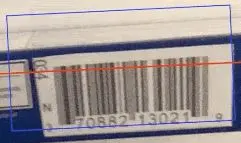valsartan 40 mg
1 INDICATIONS AND USAGE Valsartan tablet is an angiotensin II receptor blocker (ARB) indicated for: Hypertension , to lower blood pressure in adults and children 1 year and older. Lowering blood pressure reduces the risk of fatal and nonfatal cardiovascular events, primarily strokes and myocardial infarctions (1.1) Heart failure (NYHA class II-IV); to reduce hospitalization for heart failure in adults (1.2) Post-myocardial infarction: for the reduction of cardiovascular mortality in clinically stable patients with left ventricular failure or left ventricular dysfunction following myocardial infarction in adults (1.3) 1.1 Hypertension Valsartan tablets are indicated for the treatment of hypertension, to lower blood pressure in adults and pediatric patients one year of age and older. Lowering blood pressure reduces the risk of fatal and nonfatal cardiovascular events, primarily strokes and myocardial infarctions. These benefits have been seen in controlled trials of antihypertensive drugs from a wide variety of pharmacologic classes including the class to which valsartan principally belongs. There are no controlled trials in hypertensive patients demonstrating risk reduction with valsartan tablets. Control of high blood pressure should be part of comprehensive cardiovascular risk management, including, as appropriate, lipid control, diabetes management, antithrombotic therapy, smoking cessation, exercise, and limited sodium intake. Many patients will require more than one drug to achieve blood pressure goals. For specific advice on goals and management, see published guidelines, such as those of the National High Blood Pressure Education Program’s Joint National Committee on Prevention, Detection, Evaluation, and Treatment of High Blood Pressure (JNC). Numerous antihypertensive drugs, from a variety of pharmacologic classes and with different mechanisms of action, have been shown in randomized controlled trials to reduce cardiovascular morbidity and mortality, and it can be concluded that it is blood pressure reduction, and not some other pharmacologic property of the drugs, that is largely responsible for those benefits. The largest and most consistent cardiovascular outcome benefit has been a reduction in the risk of stroke, but reductions in myocardial infarction and cardiovascular mortality also have been seen regularly. Elevated systolic or diastolic pressure causes increased cardiovascular risk, and the absolute risk increase per mmHg is greater at higher blood pressures, so that even modest reductions of severe hypertension can provide substantial benefit. Relative risk reduction from blood pressure reduction is similar across populations with varying absolute risk, so the absolute benefit is greater in patients who are at higher risk independent of their hypertension (e.g., patients with diabetes or hyperlipidemia), and such patients would be expected to benefit from more aggressive treatment to a lower blood pressure goal. Some antihypertensive drugs have smaller blood pressure effects (as monotherapy) in black patients, and many antihypertensive drugs have additional approved indications and effects (e.g., on angina, heart failure, or diabetic kidney disease). These considerations may guide selection of therapy. Valsartan tablets may be used alone or in combination with other antihypertensive agents. 1.2 Heart Failure Valsartan tablets are indicated to reduce the risk of hospitalization for heart failure in adult patients with heart failure (NYHA class II-IV). There is no evidence that valsartan tablets provides added benefits when it is used with an adequate dose of an angiotensin converting enzyme (ACE) inhibitor [see Clinical Studies (14.2) ]. 1.3 Post-Myocardial Infarction In clinically stable adult patients with left ventricular failure or left ventricular dysfunction following myocardial infarction, valsartan tablet is indicated to reduce the risk of cardiovascular mortality [see Clinical Studies (14.3) ].
American Health Packaging
Related Pills
valsartan 80 mg
American Health Packaging
valsartan tablet film coated
american health packaging
atorvastatin 40 mg
mylan pharmaceuticals inc.
Atorvastatin 40 mg
Mylan Institutional Inc.
vilazodone hydrochloride 40 MG Oral Tablet Viibryd
Allergan, Inc.
vilazodone hydrochloride 40 MG Oral Tablet Viibryd
Allergan, Inc.
Lisinopril 40 MG Oral Tablet
Blenheim Pharmacal, Inc.
Tecfidera 30Day Starter Pack
Biogen Idec Inc.
magnesium oxide tablet
virtus pharmaceuticals llc
DISCLAIMER:
"This tool does not provide medical advice, and is for informational and educational purposes only, and is not a substitute for professional medical advice, treatment or diagnosis. Call your doctor to receive medical advice. If you think you may have a medical emergency, please dial 911."
"Do not rely on openFDA to make decisions regarding medical care. While we make every effort to ensure that data is accurate, you should assume all results are unvalidated. We may limit or otherwise restrict your access to the API in line with our Terms of Service."
"This product uses publicly available data from the U.S. National Library of Medicine (NLM), National Institutes of Health, Department of Health and Human Services; NLM is not responsible for the product and does not endorse or recommend this or any other product."
PillSync may earn a commission via links on our site
















16 HOW SUPPLIED/STORAGE AND HANDLING
VALSARtan Tablet, USP is available as tablets containing
VALSARtan 40 mg, 80 mg, or 160 mg. The 40 mg tablets are yellow, modified capsule-shaped, scored on one side, debossed ‚Äė40‚Äô on one side and plain on the other. They are supplied in: Unit dose packages of 30 (3 x 10) NDC 60687-612-21 The 80 mg tablets are pale red, almond-shaped with beveled edge, debossed ‚Äė80‚Äô on one side and ‚ÄúVAL‚ÄĚ on the other. They are supplied in: Unit dose packages of 100 (10 x 10) NDC 60687-623-01 The 160 mg tablets are gray-orange, almond-shaped with beveled edge, debossed ‚Äė160‚Äô on one side and ‚ÄúVAL‚ÄĚ on the other. They are supplied in: Unit dose packages of 100 (10 x 10) NDC 60687-634-01 Keep
VALSARtan Tablets, USP and all medicines out of the reach of children. Store at 20¬įC to 25¬įC (68¬įF to 77¬įF); excursions permitted to 15¬į to 30¬įC (59¬įF to 86¬įF) [see USP Controlled Room Temperature]. Protect from moisture. FOR YOUR PROTECTION: Do not use if blister is torn or broken.
More pills like OVAL 40